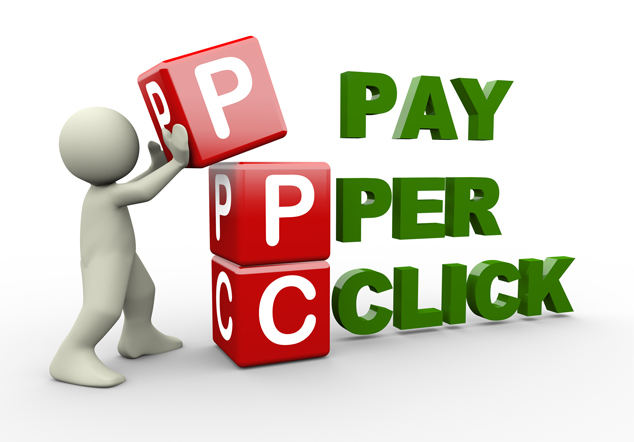Pay Per Click or PPC has really gotten popular over the years. It's an incredible tool when used correctly. If you're not sure what you're doing, it can be a big waste of money. On this page, I will share the things that I have learned from trial and error, and from reading and studying the topic. For those that are new let me explain how it works. I'm sure you've done tons of searches on Google, Yahoo, Bing, etc. When you type in the term you are looking for and hit search, you will get a list of results. The results at the very top and down the right side will be paid ads. The results down the left will be the natural results or the organic results. With all the millions of searches being done every day, wouldn't it be great to have your ad at the top? Well with PPC you can. With PPC you are bidding on keywords that are relevant to your ad.
The reason this is a great tool is it lets you target the keywords you will bid on, you create your ads based on these keywords, and you only pay if someone clicks on your ad. You also get to set your budget. You can decide that the most you will pay each time your ad is clicked on is .24 cents. You can also set a limit of $5.00 dollars a day. When your limit is up your ads will stop displaying for the rest of the day. If your going to spend money on advertising then this is a great way to go.
 Google may be correct that the most clicks will be achieved
when positioned at number one, however, this does not necessarily mean that the
client will get the best return on investment (ROI).
Google may be correct that the most clicks will be achieved
when positioned at number one, however, this does not necessarily mean that the
client will get the best return on investment (ROI).
Max CPC
|
CTR
|
Quality Score
|
Ad Position
|
|
Advertiser 1
|
0.55
|
5.8
|
3.19
|
1
|
Advertiser 2
|
2.05
|
1.5
|
3.06
|
2
|
Advertiser 3
|
3.80
|
0.6
|
2.28
|
3
|
Advertiser 4
|
1.20
|
1.8
|
2.16
|
4
|
Here are key Pay-Per-Click (PPC) management techniques that are essential for running high-performing campaigns across platforms like Google Ads, Bing Ads, and social media:
🔍 1. Thorough Keyword Research
-
Use tools like Google Keyword Planner, SEMrush, or Ahrefs.
-
Focus on high-intent keywords.
-
Use long-tail keywords for cheaper CPC and better targeting.
-
Organize keywords into tight, themed ad groups.
🚫 2. Negative Keyword Management
-
Regularly add irrelevant or underperforming search terms as negative keywords.
-
Helps prevent wasted ad spend and improves CTR.
📝 3. Compelling Ad Copy
-
Use attention-grabbing headlines and emotional triggers.
-
Include benefits, not just features.
-
Use strong CTAs (e.g., “Get a Free Quote,” “Shop Now”).
-
A/B test ad variations.
📱 4. Ad Extensions Optimization
-
Sitelinks, Callouts, Structured Snippets, Call Extensions, etc.
-
Improve ad real estate and click-through rate (CTR).
-
Tailor extensions to different ad groups or campaigns.
📊 5. Conversion Tracking & Analytics
-
Use Google Tag Manager to set up conversion tracking.
-
Link Google Ads with Google Analytics.
-
Monitor metrics like:
-
CTR
-
CPC
-
CPA
-
ROAS
-
Impression Share
-
🎯 6. Audience Targeting & Segmentation
-
Use demographic, geographic, and device targeting.
-
Leverage in-market and custom intent audiences.
-
Use remarketing lists to re-engage past visitors.
💡 7. Landing Page Optimization
-
Match landing page content to ad copy and keywords.
-
Improve load time and mobile responsiveness.
-
Include clear CTAs and trust signals (reviews, guarantees).
-
A/B test headlines, images, and forms.
🔄 8. Bid Strategy Management
-
Use automated bidding strategies (e.g., Target CPA, ROAS) if appropriate.
-
Adjust bids based on performance by:
-
Device
-
Location
-
Time of day
-
Audience segment
-
📅 9. Routine Performance Audits
-
Weekly or bi-weekly checks for:
-
High-cost/low-converting keywords
-
Underperforming ads
-
Quality Score drops
-
-
Reallocate budget to best-performing campaigns.
🧠 10. Use of Scripts and Automation
-
Google Ads scripts for:
-
Budget alerts
-
Pausing low-performing keywords
-
Auto-adjusting bids
-
-
Rules and automated rules can simplify management.
Would you like a template for a PPC audit, a campaign optimization checklist, or help with a specific ad platform like Google Ads or Meta Ads?



No comments:
Post a Comment